
Introduction
Perched elegantly on the western edge of Europe, Lisbon, Portugal’s vibrant capital, beckons travellers with its captivating blend of history, culture, and charm. This coastal city, famously known as the “City of Seven Hills,” boasts an enchanting mix of ancient ruins, colourful neighbourhoods, and stunning vistas over the Atlantic Ocean. Lisbon’s rich history dates back centuries, shaped by the Moors, Romans, and Portuguese explorers, each leaving their mark on its architecture, cuisine, and culture. From its narrow cobblestone streets lined with pastel-coloured buildings to its bustling waterfront promenades, Lisbon exudes an irresistible allure that draws visitors from around the globe.
With its labyrinthine alleyways, iconic landmarks, and vibrant neighbourhoods, Lisbon offers an endless array of experiences waiting to be discovered. Lose yourself in the historic Alfama district, where winding streets lead to hidden courtyards and breathtaking viewpoints. Explore the grandeur of Belém, home to iconic monuments like the Belém Tower and Jerónimos Monastery, reminders of Portugal’s golden age of exploration. Indulge in delectable pastries at local bakeries, savour fresh seafood at traditional tasquinhas, and sip on velvety Portuguese wines at cosy wine bars. Whether wandering through medieval castles, riding historic trams, or soaking up the sun on sandy beaches, Lisbon promises an unforgettable adventure filled with warmth, beauty, and boundless joie de vivre.
Table of Contents
Map of the Best Things to Do in Lisbon
Alfama District
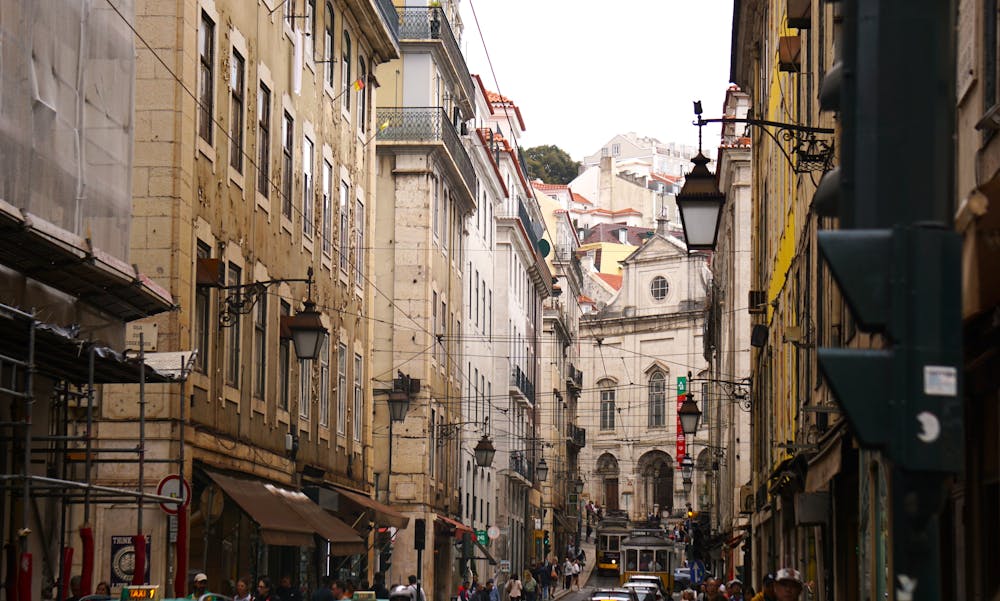
Nestled in the heart of Lisbon, the Alfama District stands as a testament to the city’s rich history and vibrant culture. Steeped in Moorish influences, this ancient neighbourhood is a labyrinth of narrow alleys, cobblestone streets, and whitewashed houses adorned with colourful tiles. Wander through its maze-like passages, and you’ll stumble upon hidden squares, quaint chapels, and picturesque viewpoints offering breathtaking panoramas of the city and the Tagus River below. The Alfama’s historic charm is palpable, with its intricate Moorish architecture and centuries-old landmarks like the Lisbon Cathedral, which dates back to the 12th century.
Exploring the Alfama is like stepping back in time, where every corner reveals a story waiting to be uncovered. Lose yourself in its enchanting ambience as you meander past quaint boutiques, cosy taverns, and lively fado houses, where the haunting melodies of Portugal’s traditional music fill the air. Embrace the rhythm of local life as you mingle with residents going about their daily routines, savoring the simple pleasures of authentic Portuguese cuisine and warm hospitality. For an immersive experience, consider joining a guided walking tour to gain insight into the Alfama’s fascinating history and cultural significance, or simply wander at your own pace, allowing the district’s timeless allure to captivate your senses and leave an indelible impression on your journey through Lisbon.
São Jorge Castle

Perched majestically atop one of Lisbon’s seven hills, São Jorge Castle is a timeless symbol of the city’s resilience and grandeur. Originally built by the Moors in the 11th century, the castle has witnessed centuries of history, from Moorish rule to the Christian Reconquista and subsequent royal residencies. Its strategic location offers panoramic views of Lisbon’s historical centre, the Tagus River, and beyond, making it a must-visit destination for both history enthusiasts and avid photographers alike. Strolling through the castle’s fortified walls, visitors can explore its fascinating archaeological sites, including the remains of Moorish dwellings, ancient cisterns, and the imposing Torre de Ulisses, or Tower of Ulysses.
For an immersive experience, consider joining a guided tour to delve deeper into São Jorge Castle’s rich history and architectural significance. Learn about the castle’s pivotal role in shaping Lisbon’s identity and discover the legends and myths that surround its storied past. Don’t miss the chance to wander through the lush gardens and terraces, where fragrant orange trees and vibrant flora provide a serene escape from the bustling city below.
Fado Show
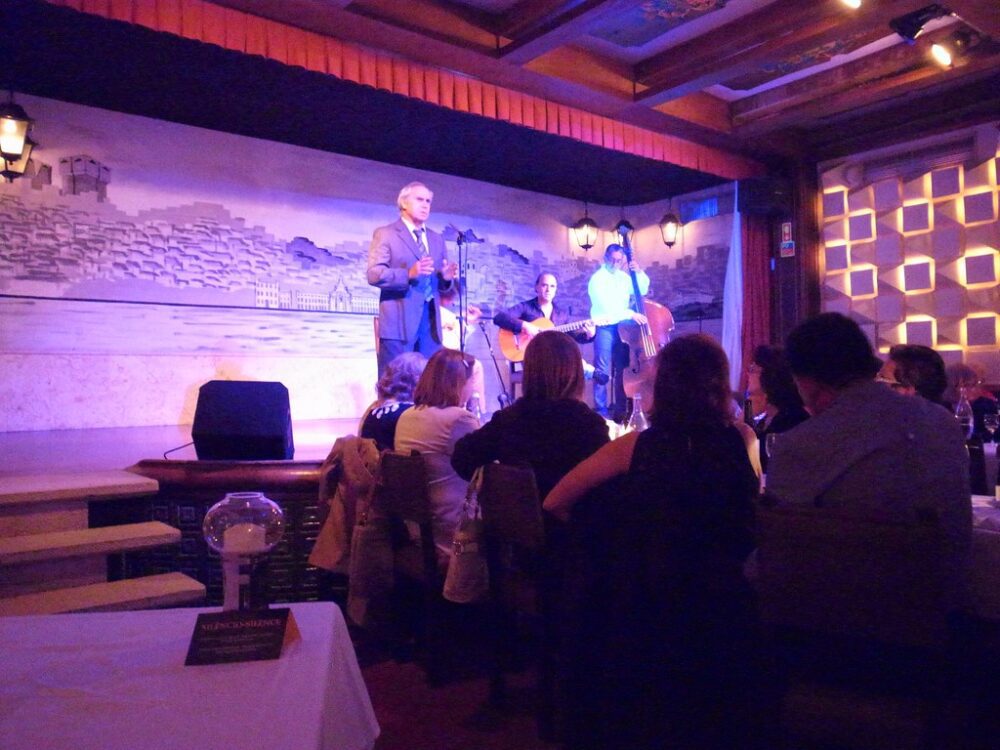
Immerse yourself in the soul-stirring melodies of fado, Portugal’s iconic musical genre that has captured hearts around the world. Originating in the streets and taverns of Lisbon in the early 19th century, fado is deeply rooted in the country’s culture and history, serving as a poignant expression of longing, love, and saudade, a uniquely Portuguese sense of melancholy. Traditionally performed by solo singers accompanied by acoustic guitarists, fado transports listeners to another realm with its haunting melodies and emotive lyrics. To experience this enchanting art form firsthand, venture to one of Lisbon’s intimate fado houses tucked away in the city’s historic neighbourhoods.
When attending a fado show, opt for a venue renowned for its authentic ambience and talented performers. Many fado houses offer dinner and show packages, allowing you to savour traditional Portuguese cuisine while enjoying the captivating performances. Be sure to book your tickets in advance, especially during peak tourist seasons, to secure the best seats and avoid disappointment. While fado can be found throughout Lisbon, some of the most renowned venues include Clube de Fado in Alfama, A Tasca do Chico in Bairro Alto, and Adega Machado in Chiado.
Tram 28
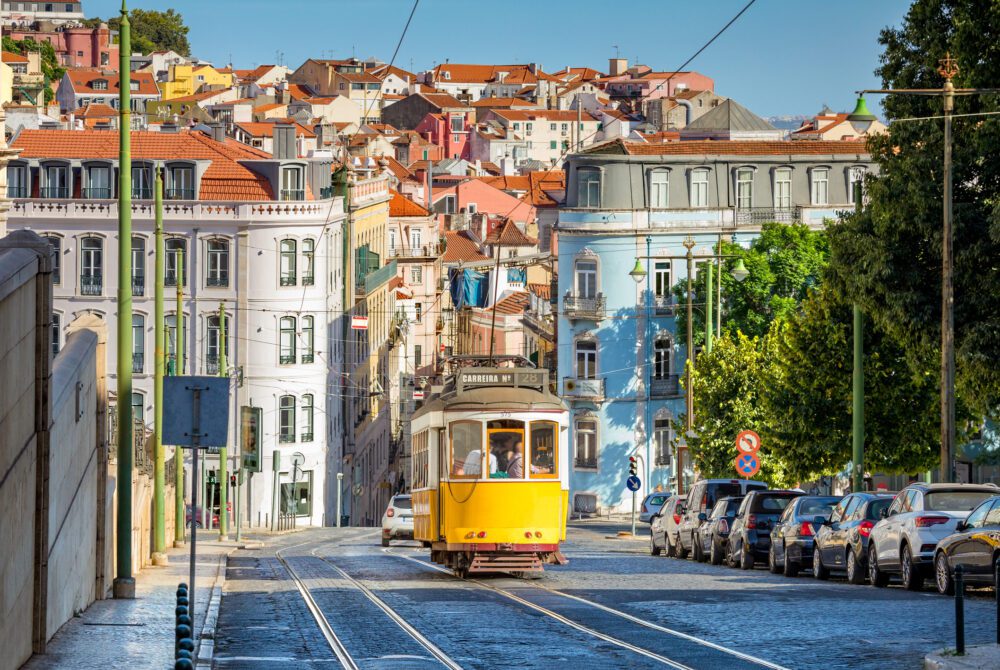
Tram 28 offers a delightful journey through Lisbon’s charming streets, providing both locals and visitors with a nostalgic ride aboard one of the city’s iconic yellow trams. Originally inaugurated in the early 20th century, Tram 28 traverses some of Lisbon’s most picturesque neighbourhoods, winding its way through narrow alleys, past historic landmarks, and up steep hills. As you hop aboard this vintage tram, you’ll be transported back in time, experiencing the authentic sights and sounds of Lisbon’s past. The route takes passengers from Martim Moniz to Campo Ourique, passing through popular districts such as Graça, Alfama, and Estrela along the way.
To make the most of your Tram 28 experience, consider starting your journey early in the morning to avoid the crowds and secure a seat near the windows for optimal views. While Tram 28 is a convenient mode of transportation for getting around the city, it’s also a fantastic way to explore Lisbon’s historic quarters at a leisurely pace. Keep in mind that Tram 28 is a popular attraction, particularly during peak tourist seasons, so be prepared for long queues at the tram stops. Alternatively, consider taking the tram in the opposite direction, starting from Campo Ourique, where you’re more likely to find available seats.
Santa Justa Lift
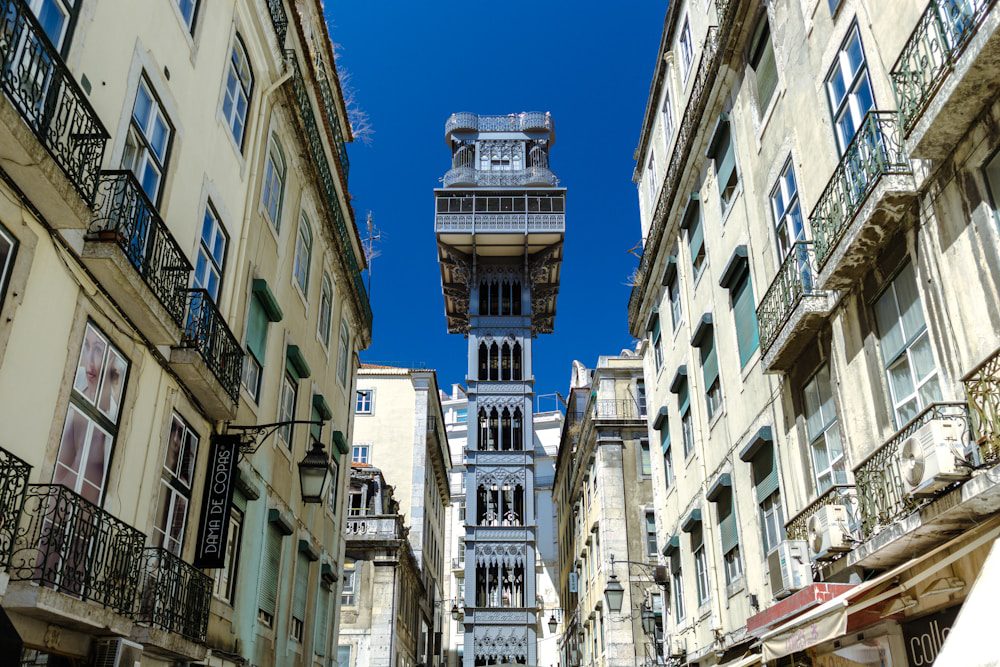
The Santa Justa Lift, also known as the Carmo Lift, is an iconic landmark in Lisbon that offers panoramic views of the city from its upper deck. Designed by the Portuguese engineer Raoul Mesnier du Ponsard and completed in 1902, this ornate iron structure stands as a testament to the city’s rich architectural heritage. Originally built to connect the lower Baixa district with the higher Carmo Square, the Santa Justa Lift is not only a functional elevator but also a fascinating historical monument. Its intricate neo-Gothic design, adorned with filigree details and decorative motifs, is a sight to behold both inside and out.
Visitors to the Santa Justa Lift can take a ride to the top for sweeping vistas of Lisbon’s rooftops, historic landmarks, and the Tagus River. To avoid long queues, it’s advisable to arrive early in the day or late in the evening, especially during peak tourist seasons. Additionally, consider purchasing a Lisboa Card, which provides discounted access to various attractions in the city, including the Santa Justa Lift.
Bairro Alto
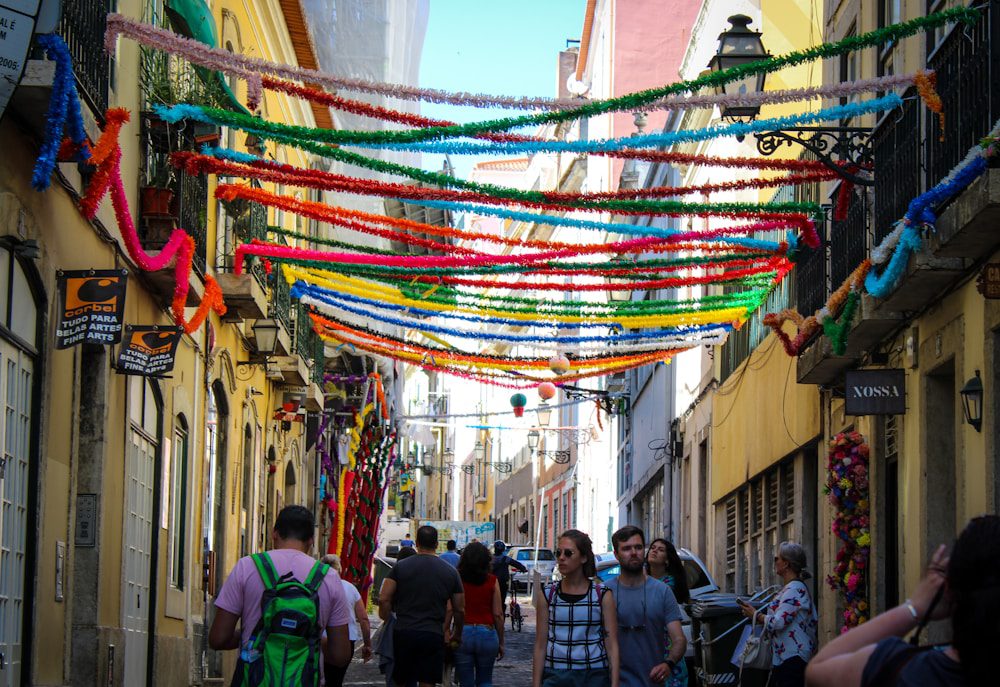
Bairro Alto, translated as the “Upper District,” is one of Lisbon’s most vibrant and historic neighbourhoods, renowned for its lively atmosphere, narrow streets, and eclectic mix of bars, restaurants, and boutiques. Originally developed in the 16th century as a residential area for the city’s affluent residents, Bairro Alto has evolved into a cultural hub and nightlife hotspot. Its winding cobblestone streets are lined with colourful tiled buildings adorned with laundry hanging from balconies, creating a picturesque backdrop for exploration. Over the years, Bairro Alto has attracted artists, musicians, and bohemians, contributing to its diverse and dynamic character.
Today, Bairro Alto is best known for its bustling nightlife scene, with countless bars, taverns, and fado houses welcoming visitors late into the night. Travellers can wander through the neighbourhood’s maze-like streets, discovering hidden gems at every turn, from traditional tasquinhas serving authentic Portuguese cuisine to trendy cocktail bars offering innovative drinks. For a truly authentic experience, consider joining a guided walking tour of Bairro Alto, where knowledgeable locals share insights into the neighbourhood’s history, culture, and culinary delights.
LX Factory
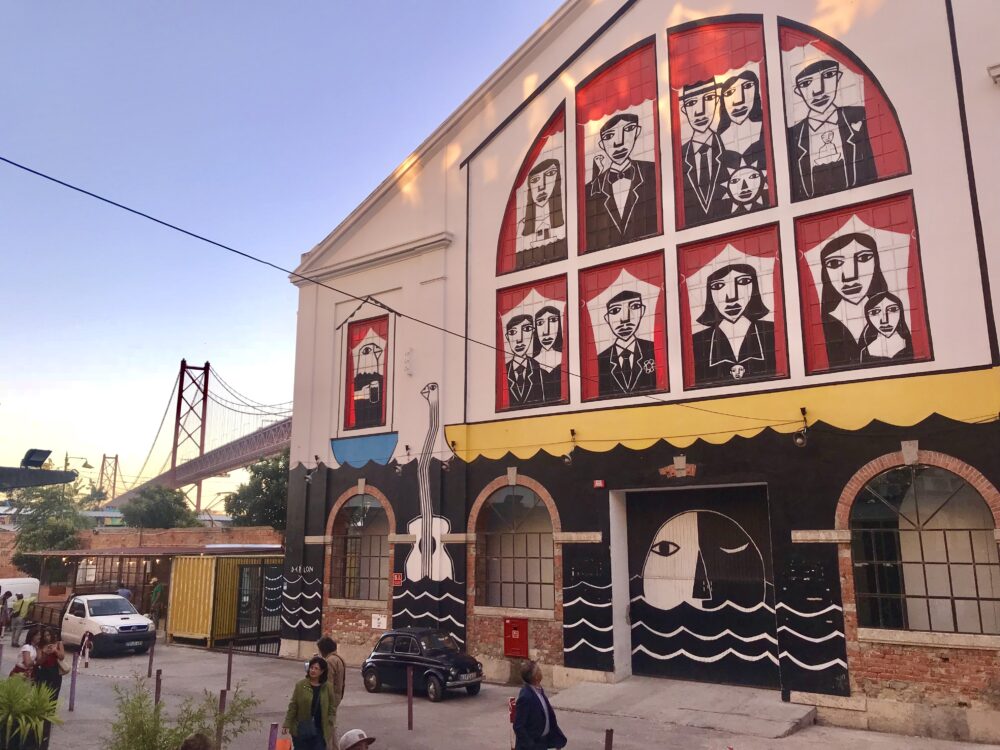
Located in the Alcântara neighbourhood, LX Factory is a dynamic creative hub housed in a former industrial complex that dates back to the 19th century. Originally home to a fabric production facility and later a manufacturing plant for printing presses, LX Factory underwent a transformation in the early 2000s, evolving into a vibrant cultural and artistic space. Today, it is renowned for its eclectic mix of art studios, design shops, cafes, restaurants, and event spaces, making it a must-visit destination for travellers seeking a unique and offbeat experience in Lisbon. The industrial charm of the complex, coupled with its creative energy, attracts artists, designers, and entrepreneurs from around the world, contributing to its vibrant and cosmopolitan atmosphere.
Visitors to LX Factory can spend hours exploring its labyrinthine corridors and alleys, discovering an array of boutiques selling everything from locally-made handicrafts to vintage clothing and contemporary design pieces. The complex is also home to several art galleries and studios, where visitors can admire works by emerging and established artists. Food enthusiasts will delight in the diverse culinary offerings at LX Factory, with a plethora of cafes, restaurants, and food trucks serving up delicious fare ranging from traditional Portuguese dishes to international cuisine. Additionally, the venue hosts regular cultural events, live music performances, and art exhibitions, ensuring there’s always something new and exciting to experience at LX Factory.
Jerónimos Monastery

The Jerónimos Monastery, or Mosteiro dos Jerónimos, is an architectural masterpiece located in the Belém district of Lisbon. Built-in the Manueline style, the monastery is a symbol of Portugal’s maritime power and wealth during the Age of Discovery. Construction began in 1501 and lasted for over a century, with the monastery being completed in 1601. The ornate facade of the monastery is adorned with intricate carvings depicting maritime motifs, biblical scenes, and symbols of Portugal’s royal family. Inside, visitors can explore the stunning cloister, adorned with delicate stone lacework, as well as the grand church with its soaring vaulted ceilings and beautiful stained glass windows.
Practical tips for visiting the Jerónimos Monastery include purchasing tickets in advance to avoid long lines, especially during peak tourist seasons. Visitors should also be mindful of the monastery’s opening hours and any special events or religious ceremonies that may affect access. Additionally, exploring the nearby Belém district offers the opportunity to sample some of Lisbon’s most iconic culinary delights, including the famous Pastéis de Belém custard tarts, which have been baked according to a secret recipe since the monastery’s construction.
Belém Tower
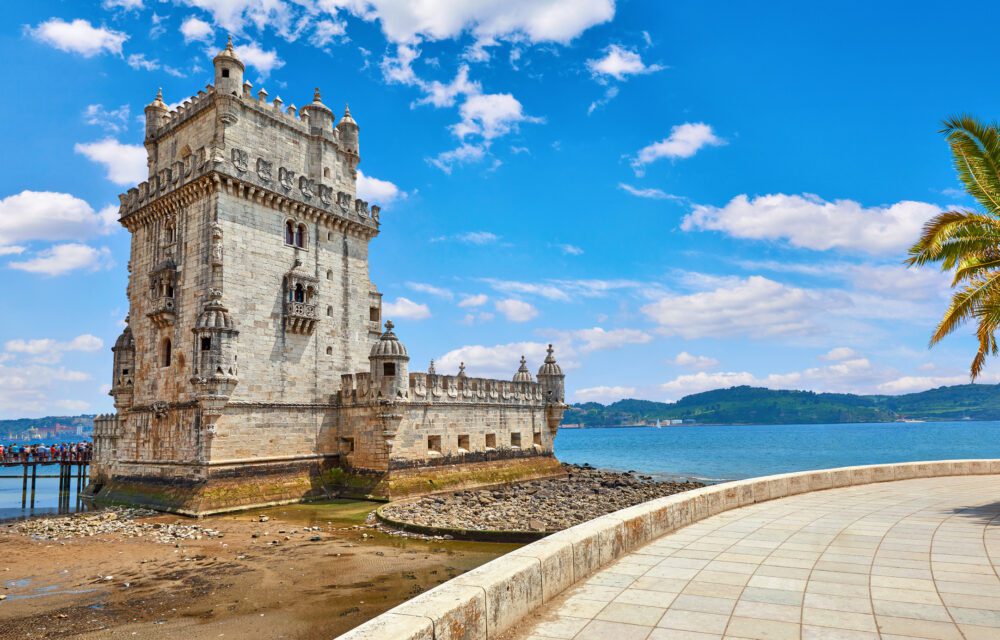
The Belém Tower, or Torre de Belém, stands proudly on the banks of the Tagus River in Lisbon and is one of the city’s most iconic landmarks. Built-in the early 16th century during the Age of Discovery, the tower served as both a fortress to defend the city and a ceremonial gateway to Lisbon. Its intricate Manueline architecture, characterized by maritime motifs and ornate stone carvings, reflects Portugal’s maritime heritage and global influence during this period. The tower’s strategic location at the mouth of the Tagus River also made it a crucial departure point for Portuguese explorers setting sail on their voyages of discovery to the New World and beyond.
Practical tips for visiting the Belém Tower include purchasing tickets in advance to avoid long lines, especially during peak tourist seasons. Visitors should also plan to arrive early in the day to enjoy the tower’s stunning views of the river and surrounding area without the crowds. Exploring the nearby Belém district offers the opportunity to visit other historic sites, such as the Jerónimos Monastery and the Monument to the Discoveries, as well as to indulge in local delicacies like Pastéis de Belém custard tarts.
Monsanto Park
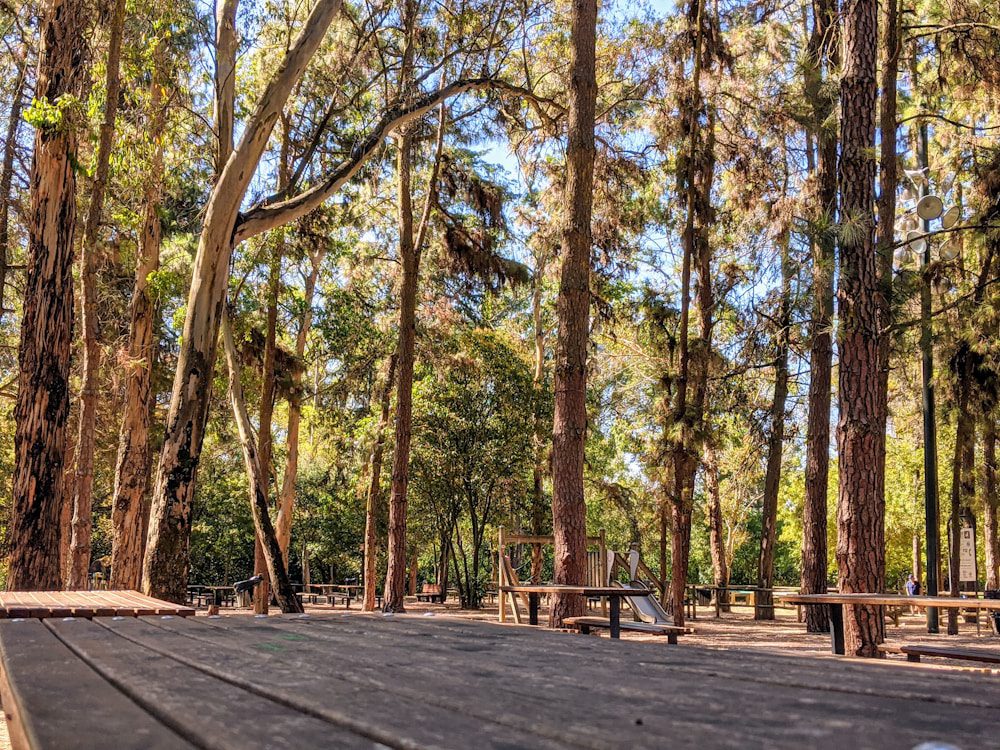
Monsanto Park, known locally as Parque Florestal de Monsanto, is a vast green oasis situated on the outskirts of Lisbon. Originally conceived in the 1930s, it was developed as part of the efforts to reforest the area and create a recreational space for the city’s residents. Today, the park covers over 900 hectares of land, making it one of the largest urban parks in Europe. Its diverse landscape includes dense woodlands, open meadows, and winding trails, providing ample opportunities for outdoor activities such as hiking, cycling, and picnicking. Additionally, the park offers stunning panoramic views of Lisbon and the Tagus River from various viewpoints scattered throughout its expansive grounds.
Practical tips for visiting Monsanto Park include wearing comfortable walking shoes and bringing plenty of water, especially during the warmer months, as the park can be quite hilly and rugged in places. Visitors may also want to consider exploring the park by bike, either by bringing their own or renting one from one of the nearby rental shops. Those interested in birdwatching will find an abundance of avian species in the park, making it a great spot for nature enthusiasts. Additionally, the park features several picnic areas equipped with tables and benches, perfect for enjoying a leisurely meal amidst the natural beauty of the surroundings.
Tagus River Cruise
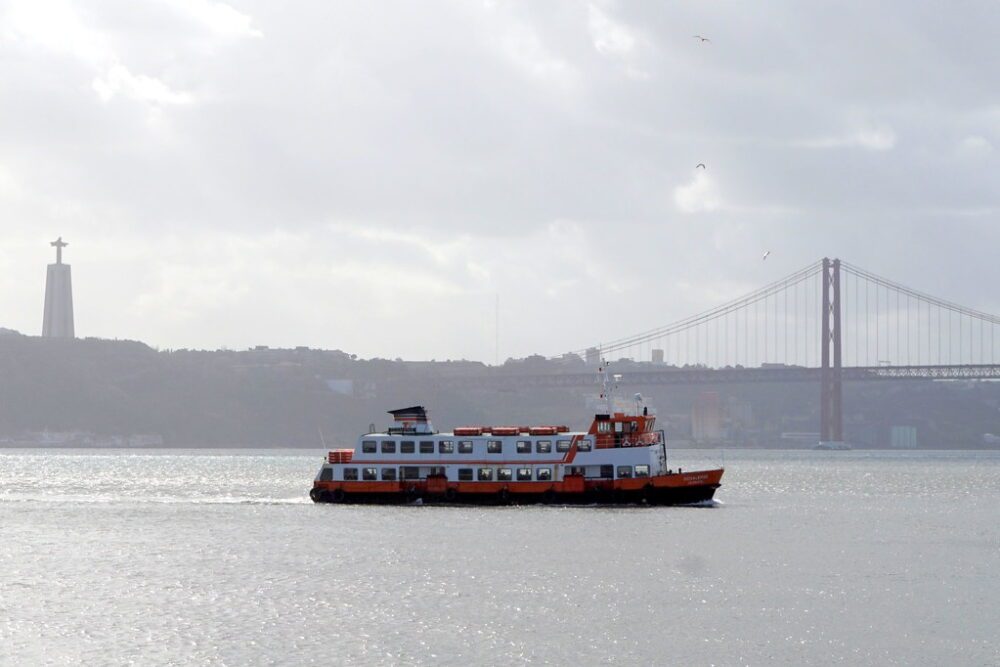
A Tagus River cruise offers a unique perspective on Lisbon’s historic waterfront and iconic landmarks. The Tagus River, also known as Rio Tejo in Portuguese, has played a significant role in the city’s history, serving as a vital waterway for trade and transportation since ancient times. Today, a leisurely cruise along the river allows visitors to admire Lisbon’s picturesque skyline, dotted with historic buildings, colourful tiled facades, and charming neighbourhoods. Along the way, passengers can spot notable landmarks such as the Belem Tower, the Jeronimos Monastery, and the Monument to the Discoveries, all of which showcase Portugal’s rich maritime heritage and exploratory spirit.
Practical tips for enjoying a Tagus River cruise include choosing between various options available, including guided tours, hop-on-hop-off boat services, and private charters, depending on preferences and budget. Sunset cruises are particularly popular, offering breathtaking views as the sun dips below the horizon and casts a golden glow over the city. Additionally, visitors should consider bringing a camera to capture the stunning scenery and landmarks from the water. Many cruises offer onboard amenities such as refreshments and commentary in multiple languages, enhancing the overall experience.
Lisbon Oceanarium

Lisbon Oceanarium, located in Parque das Nações, is one of the largest and most impressive aquariums in Europe, offering visitors a fascinating journey through diverse marine ecosystems. Opened in 1998 as part of the Expo ’98 World Exposition, the oceanarium was designed by architect Peter Chermayeff to resemble an aircraft carrier, symbolizing Portugal’s maritime history and exploration. Its central tank, holding 5 million litres of seawater, provides a habitat for a vast array of marine species, including sharks, rays, colourful tropical fish, and even penguins. Divided into four distinct habitats representing the Atlantic, Pacific, Indian, and Antarctic oceans, the oceanarium offers an immersive experience, allowing visitors to observe marine life up close through large acrylic panels.
Practical tips for visiting Lisbon Oceanarium include purchasing tickets online in advance to avoid long queues, especially during peak tourist seasons. Plan to spend at least a couple of hours exploring the various exhibits and watching feeding sessions, which provide valuable insights into marine biology and behaviour. Don’t miss the opportunity to visit the unique temporary exhibitions and interactive displays, which often highlight conservation efforts and environmental awareness. For families with children, the oceanarium offers educational programs and activities designed to engage young visitors and foster a deeper appreciation for marine conservation.
Day Trip to Sintra and Cascais

A day trip from Lisbon to Sintra and Cascais offers a captivating journey through Portugal’s rich history, stunning landscapes, and picturesque coastal towns. Sintra, a UNESCO World Heritage site known for its fairytale-like palaces and lush gardens, has been a favourite retreat for Portuguese royalty and nobility for centuries. Highlights include the colourful Pena Palace, a romantic 19th-century castle perched atop a hill, and the enchanting Quinta da Regaleira with its mysterious gardens and underground tunnels. Visitors can explore the narrow cobblestone streets of the historic centre, indulge in local pastries like travesseiros and queijadas, and marvel at the breathtaking views from the Moorish Castle.
After exploring Sintra, a visit to Cascais offers a delightful contrast with its charming coastal atmosphere and sandy beaches. Once a quaint fishing village, Cascais has evolved into a vibrant resort town known for its elegant architecture, lively promenades, and bustling marina. Travellers can stroll along the scenic waterfront, admire the grandeur of the Cascais Citadel, and relax on the golden sands of Praia da Conceição or Praia da Rainha. Don’t miss the opportunity to savour freshly caught seafood at one of the many seaside restaurants or explore the boutiques and cafes that line the charming streets of the town centre.
Day Trip to Costa de Caparica

A day trip to Costa de Caparica offers a fantastic opportunity to escape the hustle and bustle of Lisbon and enjoy the sun, sea, and sand along Portugal’s stunning coastline. Situated just across the Tagus River from Lisbon, Costa de Caparica boasts a long stretch of pristine beaches with golden sands and clear waters. Historically, Costa de Caparica was a traditional fishing village, but it has transformed into a popular destination for beachgoers and surfers alike. Visitors can soak up the laid-back atmosphere, take leisurely walks along the shoreline, and indulge in delicious fresh seafood at one of the beachfront restaurants.
For those seeking adventure, Costa de Caparica is renowned for its excellent surfing conditions, making it an ideal spot for beginners and experienced surfers alike. Surf schools dot the coastline, offering lessons and equipment rental for those looking to catch their first wave or improve their skills. With consistent swells and a variety of breaks suitable for different levels, surfing enthusiasts can spend hours riding the waves and enjoying the thrill of the ocean. Additionally, other water sports, such as bodyboarding and kiteboarding, are popular activities in the area.
Book Tickets: Lisbon Surf Experience
Day Trip to Sesimbra
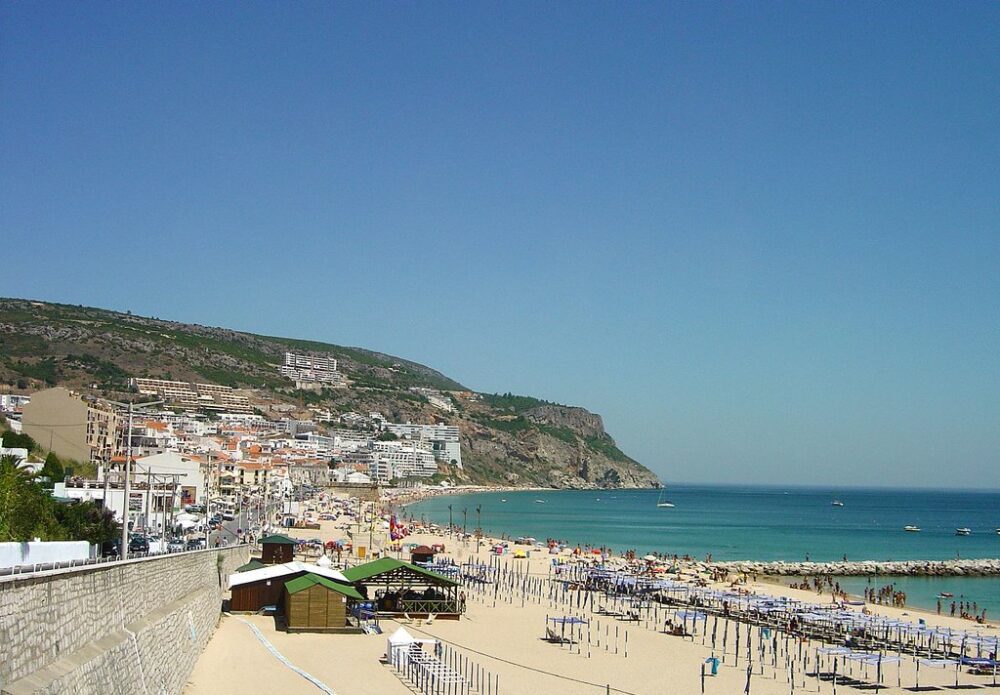
A day trip to Sesimbra offers a delightful blend of history, natural beauty, and outdoor adventures along the rugged coastline of Portugal. Situated about 40 kilometres south of Lisbon, Sesimbra is a charming fishing town with a rich maritime history dating back centuries. Visitors can wander through its picturesque streets lined with whitewashed houses, visit the medieval Sesimbra Castle perched atop a hill overlooking the town, and explore the quaint fishing harbour where colourful boats bob in the water. The town’s history is intertwined with fishing and maritime activities, which are still evident today in its vibrant fishing community and delicious seafood restaurants serving up freshly caught fish and shellfish.
One of the highlights of a day trip to Sesimbra is exploring its stunning coastline and pristine beaches. With its clear blue waters and dramatic cliffs, Sesimbra offers excellent opportunities for snorkelling, swimming, and kayaking. Visitors can rent kayaks or join guided kayak tours to explore hidden coves, sea caves, and secluded beaches along the rugged coastline. Snorkelling enthusiasts will be rewarded with the chance to discover vibrant underwater ecosystems teeming with marine life, including colourful fish, sea anemones, and sea stars.
Book Tickets: Sesimbra Kayak Discovery Experience
Conclusion
Lisbon is a captivating destination that seamlessly blends history, culture, and natural beauty. From exploring the narrow streets of Alfama to marvelling at the grandeur of Jeronimos Monastery, Lisbon offers a myriad of experiences that will enchant every traveller. The city’s vibrant atmosphere, delicious cuisine, and warm hospitality make it a must-visit destination for anyone seeking to immerse themselves in the rich tapestry of Portuguese culture.
Whether you’re wandering through historic neighbourhoods, admiring panoramic views from hilltops, or indulging in fresh seafood by the waterfront, Lisbon never fails to leave a lasting impression. With its wealth of attractions and activities, Lisbon is sure to capture the hearts of visitors and leave them longing to return to experience more of its charm and beauty.
